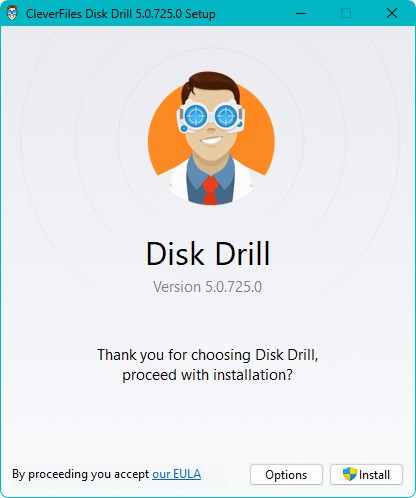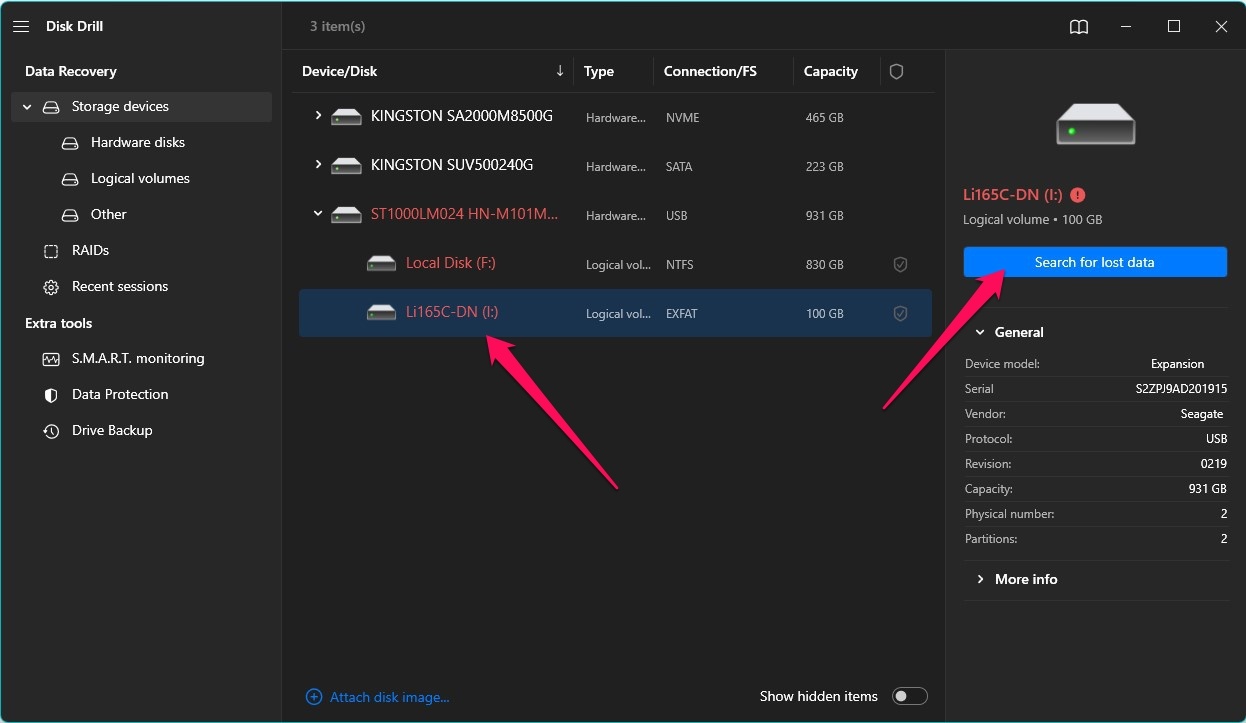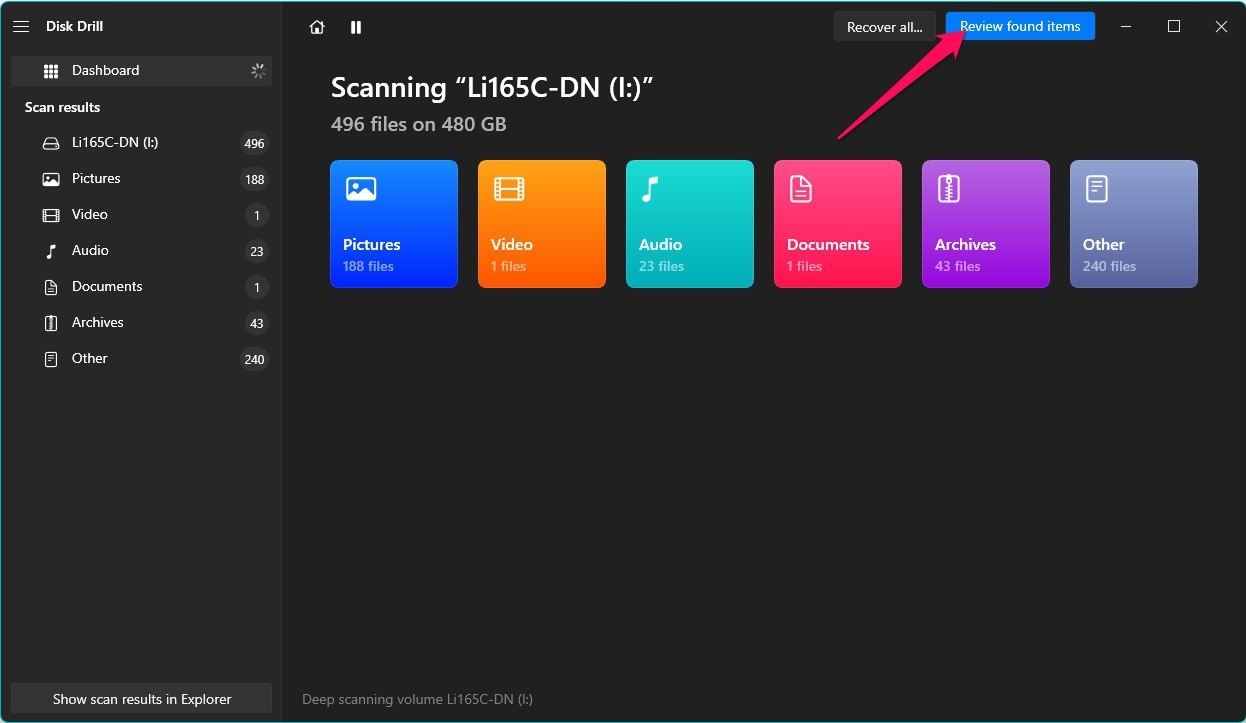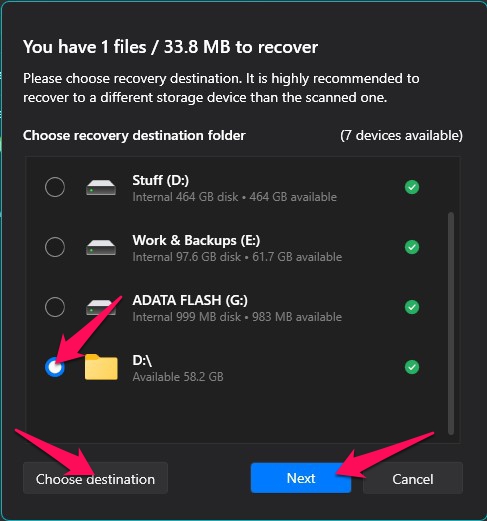Reading Time: 7 minutesCCTV cameras are a great way to keep tabs on your home or place of business, providing you with an added layer of protection against burglary and other forms of criminal activity. But what if some vital footage gets accidentally deleted?
Fortunately, in some cases, erased CCTV files can be retrieved. In this guide, we’ll take a quick look at how these types of cameras store their information, as well as how to restore deleted CCTV footage.
How Is CCTV Footage Stored?
Depending on the model, there are various ways that CCTV cameras may store footage. Some utilize hard disk drives or solid-state drives that continuously record footage throughout the day. Others have built-in storage capacity that can be expanded with SD cards to save more recordings.
A lot of modern models also come with Cloud storage features that store surveillance files in the cloud, such as Wyze Cameras. Finally, there are digital video recorders (DVR) and network video recorders (NVR), which are external equipment that save CCTV camera footage. Old CCTV cameras that used cassette tapes to store recordings are obsolete and no longer commonly used.
Here’s a table for a brief comparison of these CCTV storage options:
| Storage method | Description |
| HDDs and SSDs | Great for continuous daily recording |
| Built-in storage and SD cards | Expandable storage, depending on the SD card used |
| Cloud storage | Allows remote access to footage through cloud services |
| Digital video recorders (DVRs) | It saves data locally and is commonly used in analog cameras |
| Network video recorders (NVRs) | It saves recordings to a network and is commonly used in tandem with IP cameras |
| Cassette tapes (obsolete) | An old storage method that is no longer utilized |
Does CCTV Footage Get Deleted Automatically?
CCTV footage saved on physical storage devices like HDDs, SSDs, and memory cards normally don’t get deleted automatically. But due to the limited capacity of these types of devices, they’ll eventually run out of storage space. When that happens, older footage will begin to be overwritten by new data. Here are a few factors that can affect how quickly the footage gets overwritten:
- The overall capacity of the storage device: Once it reaches its maximum, your security cameras overwrite the older footage with new ones. This frees up storage space and ensures compliance with privacy policies.
- The resolution of the CCTV cameras that you have installed: Higher-resolution CCTV cameras create large video files. This leads to faster consumption of storage space, which results in shorter footage retention.
- The number of CCTV devices that are set up: Every camera in your CCTV system needs storage space for its footage. The more cameras you have, the bigger the space needed. If you have limited storage, the footage may get overwritten more frequently.
How to Recover Deleted CCTV Footage
There are various recovery methods you can leverage to get back deleted CCTV footage, depending on how the data is stored. Below is a list of the top ways to recover deleted CCTV footage from physical storage mediums, such as DVRs, HDDs, SSDs, and memory cards.
Method 1: Data recovery software
The best “do-it-yourself” way of getting back deleted CCTV videos is by using first-rate data recovery software, but it’s worth noting that you should attempt the recovery process as soon as possible to avoid the deleted recordings being overwritten. Furthermore, this method is only applicable to physical storage mediums that can be connected to a computer.
Disk Drill is an excellent program that offers top-notch recovery rates and a user interface designed for both novices and veterans. It also supports pretty much every kind of file type there is and it’s compatible with most kinds of storage devices typically associated with CCTV setups.
To add to all of that, you get a trial version that boasts all of the program’s features, along with a recovery limit of half a gigabyte. Make sure the CCTV storage medium is connected to your computer then follow these instructions to retrieve your deleted CCTV footage:
- To get started, head to the Cleverfiles website and download the Disk Drill installation file.
- Next, launch the download file and follow the instructions until successfully installed.

- Launch Disk Drill, then choose the appropriate device from the list and click the Search for lost data button to proceed.

- Upon clicking, the program will begin scanning your selected storage device for any recoverable files. While you’re waiting for the scan to complete, you can click the Review found items button on the top-right corner of the window to take a look at the files that the scan has unearthed so far. Otherwise, you can just wait for the scan to finish and then click the same button to head to the results page.

- Browse through the results screen until you find the deleted footage you want to retrieve. You can filter out the results by selecting Video on the left pane or by using the search bar on the top-right corner if you know the file name or format of the footage. Tick the checkbox beside the file name to select the files you want to recover, then click the Recover button to continue.

- After that, a pop-up will appear where you’ll have to choose a location to store the rescued CCTV footage. This must be in a storage device than the one you’re recovering from. Click Next to finalize the process.

- Upon clicking, Disk Drill will now begin attempting to rescue the deleted footage. If successful, you’ll see a completion message on-screen. If you want to head directly to the recovered files, just click the Show recovered data in Explorer button.

Method 2: Backup
This method only works if you’ve made a CCTV camera backup of your recordings prior to it being deleted. If that is the case for you, all you have to do is:
- Navigate to the folder where the backup is located
- Find the footage you’re trying to recover
- Copy it over to the storage device where the CCTV footage was initially saved before being deleted.
Backing up footage ensures retrieval not only when it gets overwritten but also when your CCTV system suffers from failure. It’s prone to problems like mechanical issues in the storage device, bad wiring, outdated firmware, and vandalism.
For commercial establishments, thieves can even destroy and take local storage in CCTV cameras—footage is effectively lost. This can make your business vulnerable to criminal activity.
You can use many backup options, including cloud storage, FTP (File Transfer Protocol) servers, and mobile device storage.
Do keep in mind that you’re only allowed to retain footage for a certain amount of time, depending on the application and privacy regulations in your area. For example, banks can store footage for 90+ days, whereas other institutions can only do it for a shorter time.
Method 3: Data recovery service
If a data recovery program was unable to recover your deleted CCTV footage and you weren’t able to create a backup beforehand, then your best bet at recovering the lost files is by contacting a quality data recovery service.
These types of services offer skilled technicians who specialize in recovering lost or deleted data from a wide range of storage devices and data loss scenarios.
Conclusion
Accidentally deleting crucial CCTV footage can be a nightmare, but luckily enough, there are different ways you can go about retrieving your lost videos. If you have a backup, then it’s as easy as copying and pasting the footage back to the storage device. If not, then you can try utilizing a data recovery program to help you bring back the lost files. And if that doesn’t work out, you can always reach out to a professional data recovery service for assistance.










